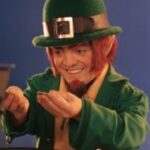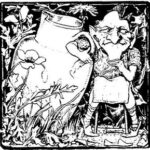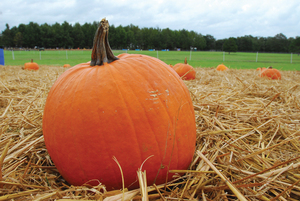St. Patrick’s Day in your town: emerald-green shamrocks, great food, and leprechauns are predominant on and in every window, alleyway, and t-shirt. But wait, how did that last one get in there?
Leprechauns have been part of Irish culture dating back to ancient times. In typical Irish folklore, the creatures are referred to as “leipreachn,” which translates roughly to “sprite” or “pigmy. Older references stem from the Old Irish “luchorpn,” which means, quite literally, small (l) body (corp), because of the leprechaun’s traditional appearance as a small, yet quite old, man. The leprechaun’s appearance varies from place to place, and often depends on the reader’s interpretation of a particular folk song or myth. Prior to the 1900’s, leprechaun’s did not, in fact wear green. In a description by Ray McAnally, the famous Irish actor, a leprechaun was “about three feet high, and is dressed in a little red jacket or roundabout, with red breeches buckled at the knee, gray or black stockings, and a hat, cocked in the style of a century ago, over a little, old, withered face.” In most American celebrations, the modern green smock is depicted. Personality-wise, these little men have usually adhered to a specific mindset: mischievous and foul-mouthed.
Now to the origin of the leprechaun. This is quite difficult to decipher. One history of the common leprechaun states that the small sprites are children of the Tuatha De Danaan, a magic-wielding folk under the goddess Danu. This magic race was commanded by Lugh the “Long-Armed Warrior,” who used a rainbow as a type of slingshot in battle. According to legend, the Tuatha De Danaan conquered Ireland aboard flying ships centuries before the Celts arrived. The Celts ravaged towns and villages, forcing the Tuatha De Danaan to travel underground through magical doorways.
Nowadays, their descendants, the leprechauns, come out every once in a while with a pot of gold at the end of a rainbow, honoring Lughthe Warrior. Leprechauns guard their gold fiercely, are notoriously fast, and the only way to claim their gold is to catch the. Making this even more difficult, it is said that if you look away, they can return underground with a snap of their fingers. While this may be the accepted history of the leprechaun, other references are commonly found. The earliest mention of a leprechaun in text is in the “Adventure of Fergusm, Son of Leti”, a medieval tale in which, at one point, the king of Ulster is nearly dragged out to sea by three of the little sprites.
In the English language, the first appearance of a “leprechaun” reference is in “The Honest Whore, Part 2 (1604),” by English dramatist and writer Thomas Dekker: “As for your Irish lubrican, that spirit / Whom by preposterous charms thy lust hath rais’d / In a wrong circle.” The National Leprechaun Museum will open in March of 2010 in Dublin, hopefully giving us a closer look at the birthplace of the green (or red) fairies we have learned to love. No matter the actual origin of the leprechaun, it is an ingrained part of Irish folklore, and while we may not know where they came from, we can make sure to cherish them every year on the 17th of March: St. Patrick’s Day.




